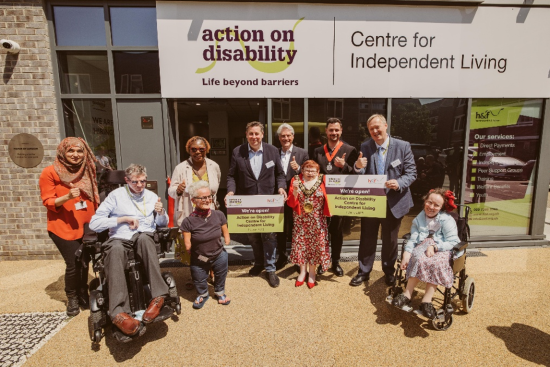Policy HO5
Inclusive and accessible housing
The council will seek to secure high quality inclusive and accessible homes in all developments that include housing, in particular we will require that:
a) At least 10% of new housing must meet Building Regulation requirement M4(3) 'wheelchair user dwellings'. 'Wheelchair user dwellings' should be provided in proportion to the tenure mix of the development.
b) All other dwellings must meet Building Regulation requirement M4(2) 'accessible and adaptable dwellings' and where feasible, additional dwellings resulting from conversions, changes of use and dwellings formed from extensions or floors added to existing blocks of flats should also meet this requirement.
To comply with the Building Regulation requirements appropriate step-free access into the dwelling will need to be provided.
Design and Access Statements, submitted as part of development proposals, should include an inclusive design statement, as set out in the London Plan.
4.41 In 2021 Census, 12.5% of the population of Hammersmith and Fulham reported as being disabled under the Equality Act. Furthermore, the population aged 65 and over in the site-by-site increased by 15.7% from the 2011 Census. With improved life expectancy and a gradual shift towards longer periods of time spent with chronic and disabling conditions, services are focusing more on community-based support to keep people in their own homes. This policy helps support the council's approach to meeting housing needs for older people through adaptable housing. It is therefore essential for Hammersmith and Fulham to increase the supply of both wheelchair accessible and wheelchair adaptable housing across all tenures. For the avoidance of doubt, this policy applies to dwellings that are created via works to which Part M volume 1 of the Building Regulations applies.
Building regulations
4.42 The government produces optional Building Regulations which can be used to increase the accessibility of new homes to people with mobility difficulties. The optional Building Regulations in Approved Document M includes Category 2 for "accessible and adaptable dwellings". This is known as M4(2) and is broadly equivalent to satisfying the former Lifetime Homes criteria. Approved Document Part M also includes Category 3 for "wheelchair user dwellings" known as M4(3). Part M4(3) further distinguishes between "wheelchair accessible" dwellings (M4(3)(2)(b)) (homes readily useable by a wheelchair user at the point of completion) and "wheelchair adaptable" dwellings (M4(3)(2)(a)) (homes that can be easily adapted to meet the needs of a wheelchair user).

4.43 The London Plan requires for at least 10% of all new dwellings (created by works to which Part M Volume 1 of the Building Regulations applies), to be built to Building Regulation requirement M4(3) 'wheelchair user dwellings' designed to be wheelchair accessible, or easily adaptable for residents who are wheelchair users. When providing 'wheelchair user dwellings' in a development, it is important not only to ensure an increase in accessible homes within the borough but also to ensure that where there are mixed tenure schemes that the provision of 'wheelchair user dwellings' are provided in equal proportion to the tenure mix of the development and should be distributed throughout the development. The London Plan requires all other dwellings to meet Building Regulation requirement M4(2) 'accessible and adaptable dwellings'.
4.44 To comply with these requirements, step free access into the dwelling must be provided. Generally, a lift will be required where a dwelling is accessed above or below the entry storey. Although most new build housing will be built to meet this requirement, the council considers that new dwellings resulting from a change of use, conversion or extension to existing residential building, should also aim to meet these requirements. It is recognised that there may be circumstances where it is not possible to achieve the full M4(2) requirements. The policy therefore allows for some flexibility in achievement of the criteria, but the council will require assessments to show why the requirements cannot be met.
Wheelchair user dwellings
4.45 'Wheelchair accessible dwellings' which are designed to be readily useable at the point of completion will only be required for those dwellings where the council is responsible for allocating or nominating a person to live in that dwelling. The remaining dwellings should be 'wheelchair adaptable' and built to be easily adapted to meet the needs of a household that includes a wheelchair user.